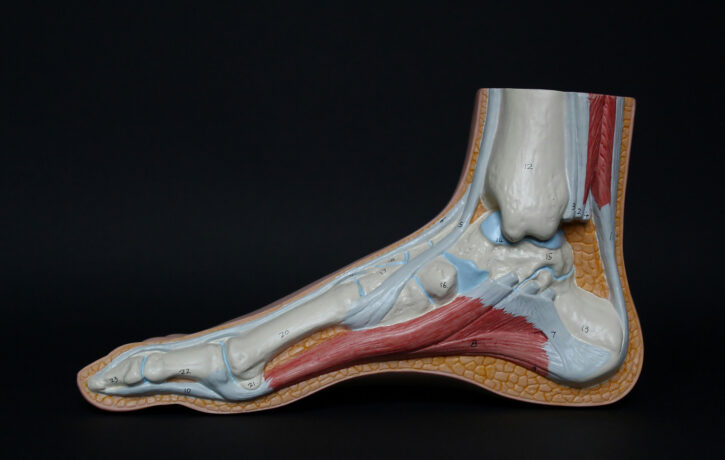Understanding Achilles Tendinopathy and Its Contributing Factors

Achilles tendinopathy (AT) is a prevalent condition that affects both the general population and athletes. It impacts approximately 2% of the general population and as many as 50% of athletes, particularly runners. In the UK, it is estimated that between 133,000 and 228,000 runners experience AT at any given time. Despite its widespread occurrence, understanding the underlying causes and risk factors remains a challenge.
Causes and Mechanisms of Achilles Tendinopathy
The “continuum model” is the most commonly accepted explanation for the development of Achilles tendinopathy. This model suggests that excessive stress on the tendon is the primary factor leading to damage. Overloading disrupts the balance between tissue degeneration and repair, triggering a degenerative process. This process involves inflammation and changes in biochemical pathways, which contribute to pain and dysfunction. Chemicals such as substance P, cytokines, and proteoglycans play a role in the discomfort associated with this condition.
At its core, Achilles tendinopathy represents a disruption in the tendon’s ability to maintain tissue homeostasis. Risk factors can be categorised into those that accelerate tissue wear and those that hinder the repair process.
Risk Factors for Achilles Tendinopathy
The risk factors for AT are broadly classified into intrinsic (internal) and extrinsic (external) factors:
Intrinsic Factors: These factors pertain to an individual’s physical capacity to endure and repair tendon damage. They include:
- Systemic Conditions: Diseases like diabetes, inflammatory arthritis, and aging-related changes can impair tendon healing.
- Aging: Structural changes in collagen fibers associated with aging weaken the tendon, reducing its capacity to manage physical stress.
- Musculoskeletal Factors: Limited plantarflexion range of motion (ROM), calf muscle weakness, and prior injuries to the Achilles tendon are significant contributors. Studies have identified that deficits in calf muscle strength (plantarflexors) are predictive of AT development.
Extrinsic Factors: These involve external stressors that strain the tendon, including:
- Training Errors: Sudden increases in activity intensity, frequency, or duration can overload the tendon, especially after periods of inactivity when the body is less conditioned.
- Environmental Influences: Factors such as inappropriate footwear, training surfaces, and exposure to cold weather can exacerbate tendon stress.
Types of Achilles Tendinopathy
There are two main types of Achilles tendinopathy, distinguished by their location:
- Mid-Tendon Tendinopathy: Often caused by tensile forces, this type affects the tendon body.
- Insertional Tendinopathy: Typically linked to compressive forces, it occurs at the tendon’s attachment to the heel bone (calcaneus), especially during dorsiflexion.
Understanding these distinctions is essential for diagnosing and developing effective treatment plans.
Addressing Modifiable Risk Factors
Management of Achilles tendinopathy focuses on targeting factors that can be modified. Key interventions include:
- Strengthening Exercises: Improving lower limb strength and ankle dorsiflexion ROM can enhance tendon resilience.
- Load Management: Gradual increases in physical activity intensity can prevent overloading. Proper planning and adjustment of training loads are critical.
By addressing these factors, the risk of recurring or further injury can be significantly reduced.
Achilles tendinopathy is a complex condition influenced by a combination of intrinsic and extrinsic factors. While its precise mechanisms are still being investigated, research highlights the importance of managing tendon load, strengthening relevant muscle groups, and addressing systemic health issues. By understanding these factors, clinicians can create personalised treatment plans aimed at minimising tissue wear and optimising repair processes. This tailored approach holds promise for both preventing and treating Achilles tendinopathy effectively.
Matthew Oliver is an osteopath, musculoskeletal pain specialist and massage therapist. For further information or to book a treatment with Matthew, phone The Body Matters on 01702 714968 or contact us to book an appointment.
- Finding Hope and Comfort Through Pain - 21st March 2025
- Non-Pharmacological Solutions for Managing Pain in Parkinson’s - 19th February 2025
- The Healing Touch: How Massage Benefits People with Spinal Injury Pain - 28th January 2025
